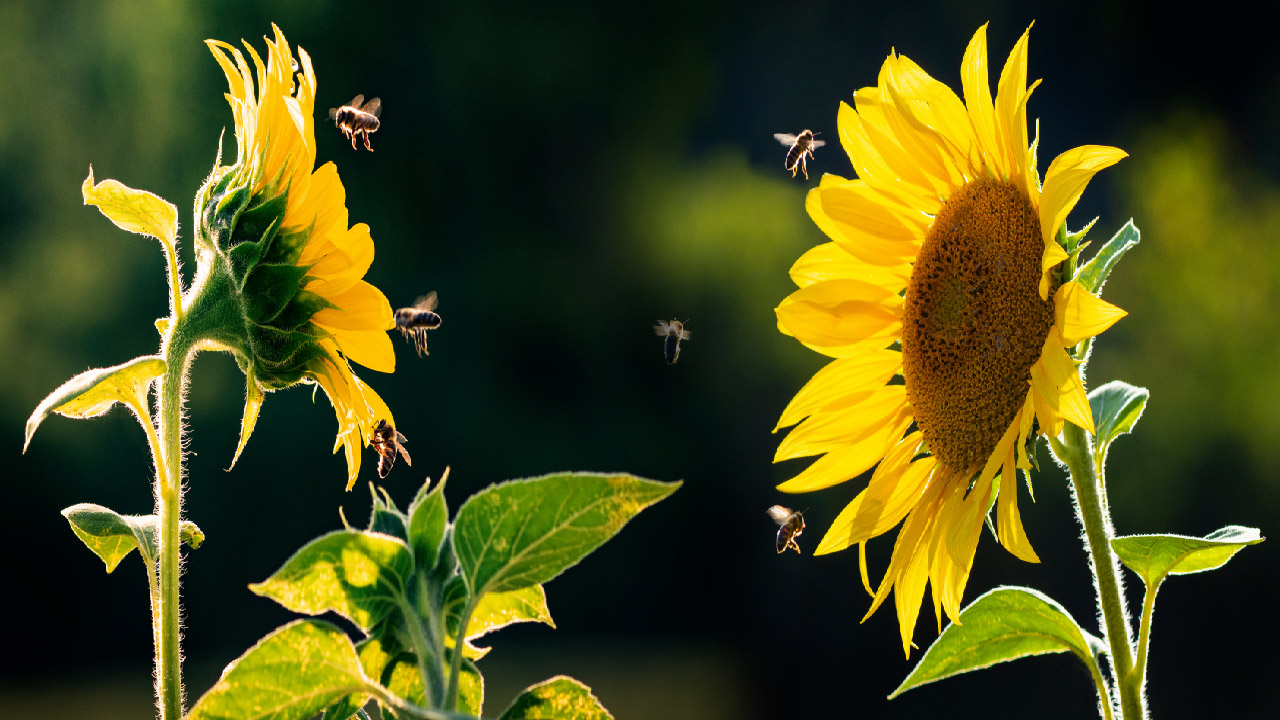Planning Your Pollinator Garden
Apr 12th 2023
The perfect storm of 2020 was a year to remember. We had the worst pandemic in 100 years. An unparalleled fire season on the West Coast brought on by a drought threatened people, property and native fauna and flora.
All over the country, many of us were sheltering in place. Some turned to gardening and drip irrigation to provide a constructive way to improve their lives and the surrounding landscape. Working on the soil also gave them a way to grow their own delicious, nutritious, and fresh food at home.
Suffering along with us are the pollinators, the insects we depend on to grow our food. Their numbers are being depleted because of loss of habitat, climate change and pesticide use.
So, in addition to planting a vegetable garden to feed you and your family, consider planning a pollinator garden to feed your pollinating pals. A garden plan for pollinators need not be complicated or expensive. Many great pollinator garden design plans are available online or in books. Basically, when planning your garden, think like a pollinator.
Benefits of a Garden Plan for Pollinators
Pollinators are incredibly important to the natural cycles of life here on earth. They are crucial for the growth of many flowering plants that produce seeds.
According to the Smithsonian Institution, nearly 90% of flowering plants rely on pollinators to grow, thrive, and reproduce. More than $10 billion worth of crops depends on pollinators, according to the U.S. Department of Agriculture.
Besides helping plants produce food and beautiful flowers, the many plants that pollinators help to grow can remove carbon dioxide from the atmosphere. In addition, these plants, trees, and shrubs help cleanse our water supplies and prevent erosion.
There are thousands of types of pollinators in the world. When it comes to pollination, many of us think of bees. They are extremely important, but many other types of animals and insects can pollinate, including birds, bats, small mammals, wasps and even flies.
One of the most important pollinators is bees, whose numbers are shrinking at an alarming rate. It takes 60,000 bees to pollinate one acre, be it almonds, apricots, peaches, or gardens with squash, zucchini or dozens of other fruits and vegetables. You can help preserve pollinators by not using toxic chemicals and by being a good steward of the earth by growing your food organically.
You will see your crops flourish while saving water if you irrigate your native trees and shrubs and your vegetable garden with drip irrigation. One steady drip of water delivered to the soil's surface from emitters will spread down deeply to the plant's roots.
At the same time, drip irrigation deprives weeds of the chance to germinate and grow. That will save you the time you would have to spend at the garden weeding. Drip irrigation is an excellent way to grow native varieties of plants you find attractive.
Another major pollinator, the butterfly, has seen its population decline so tremendously that some species are on the brink of extinction. In 1980, you could see more than 4 million monarch butterflies overwintering in Northern California. This winter, only 30,000 butterflies arrived from their migration.
Herbicides and frequent mowing along roadsides and highways have decimated the only food source of monarch young, milkweed. Milkweed is a perennial plant that grows up to six feet tall and puts out attractive flowers for us to enjoy and butterflies to feed on. You can find milkweed starts at our friends, Annie's Annuals, or at the pioneers in sustainable gardening, High Country Gardens.
Plants that Support Pollinators
Drip irrigation can also help your commitment to plant a native landscape get off to a good start by raising the survival rate of the delicate transplants that grow in your area. This effort will take some research into the survival rate of each type of plant, but the effort is worth it. Once your native plants are established, they will require very little care.
Some native plants, like oak trees, support 534 species of the Lepidoptera family of pollinators, like butterflies and moths, that start their lives as caterpillars. Some shrubs like manzanita and serviceberry are very attractive to bees, which collect their nectar in late winter and early spring and take the nectar back to their hives to make the honey vital to their survival.
Beautiful madrone trees, with their smooth, light brown mottled trunks and shiny leaves, are native to our area in Northern California. You can buy madrones at some local nurseries or online. These trees flower, which will provide food for the bees.
If you apply drip irrigation during their first two or three years, these trees and shrubs will thrive with very little care.
I strongly recommend Emitter Tubing, a dependable and long-lasting product, with emitters that are factory inserted. This type of system will water evenly over long distances or going up and down hills. It can be used by circling trees and shrubs in flat or undulating terrain because of its even, pressure-compensating flow in any kind of topography.
When a windbreak is necessary in a farm setting or for hedges along the property line of your property, emitter tubing can give you eight to 10 years of life expectancy. The flow will be even from the beginning to the end of the line. Installation time will be faster too.
If you are expecting a dry future or even if you think a more normal weather pattern will return, drip irrigation is a constructive way to improve the environment.
Drip irrigation from DripWorks.com will be there for you to help you out. You will find the widest selection of drip products and the best technical assistance to help you grow and restore the native plants around your property.

